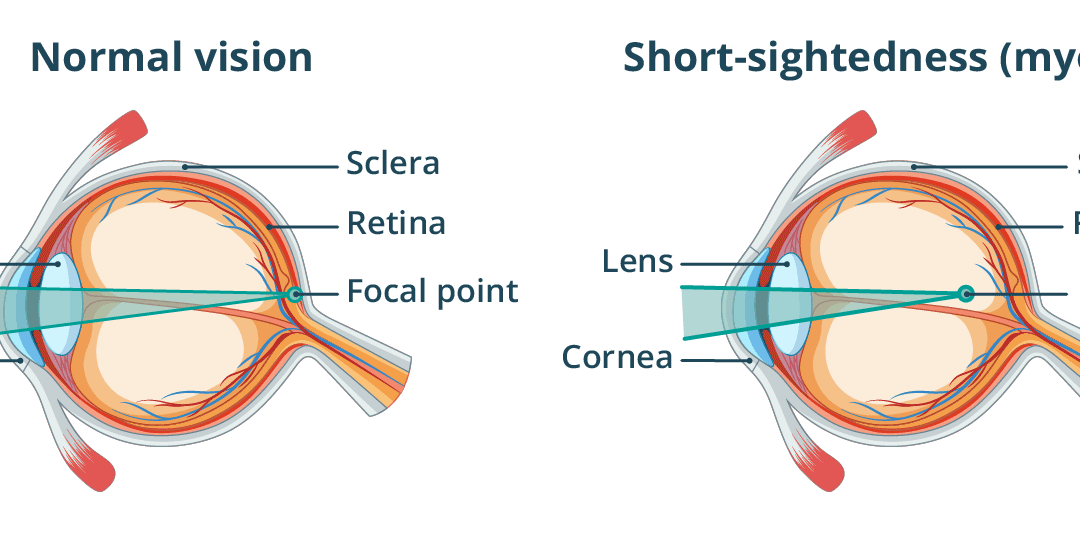What is it?
Myopia, commonly known as short-sightedness, is when nearby objects are clear, but things in the distance look blurry. This happens because light entering the eye focuses in front of the retina (the light-sensitive layer at the back of the eye) instead of directly on it. You can think of it like a camera that’s focused too close – far-away scenes come out blurry.
Symptoms
- Blurry vision when looking at distant objects (for example, road signs or the TV)
- Squinting to see more clearly
- Eye strain or headaches after tasks that require seeing far away
Causes
Myopia often runs in families and usually develops during childhood or teenage years. Spending lots of time doing close-up activities (like reading or using digital devices) and less time outdoors has also been linked to a higher risk.
Treatment
The good news is that myopia can be corrected easily. Options include:
- Glasses – the most common and simple solution.
- Contact lenses – a good alternative if you prefer not to wear glasses.
- Refractive surgery (such as LASIK) – for suitable adults wanting a more permanent correction.
When to see an optometrist
If you notice distance vision becoming blurry or find yourself squinting often, it’s a good idea to book an eye test. Myopia is very common and can be managed effectively.
Resources
- South African Optometric Association
- American Academy of Ophthalmology – Myopia
- NHS – Short Sightedness



Recent Comments